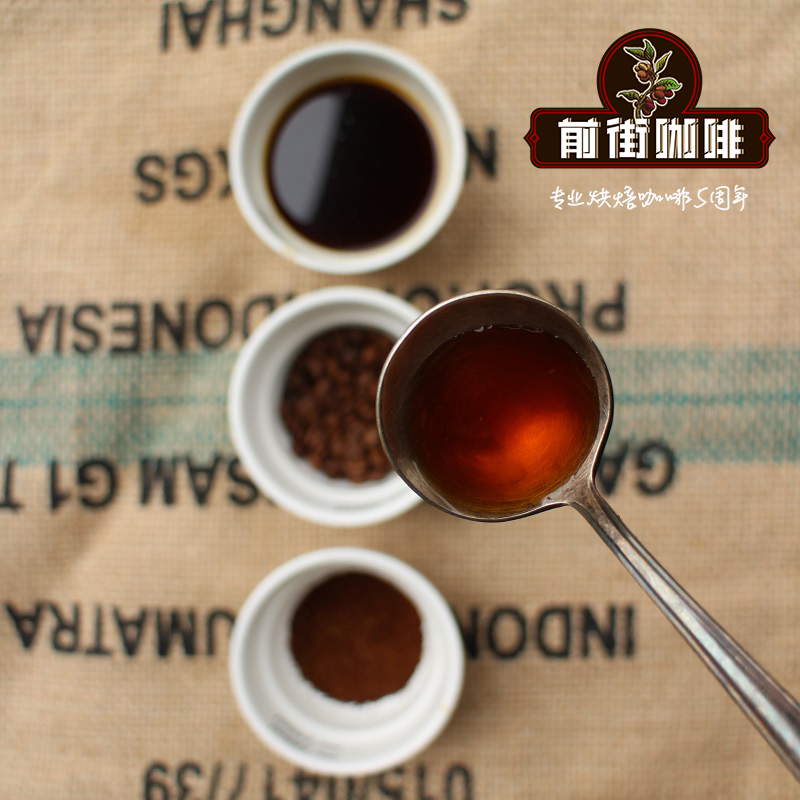How does Honduras control leaf rust? What are the measures for the treatment of leaf rust in Honduras

The coffee industry was shocked and shocked by the news that Lompilla (formerly thought to be "rust-proof" coffee) had been infected with rust in Honduras.
However, while producers are shocked, Honduras is in a much better position to deal with caffeine rust than it did in 2012, when the last epidemic hit.
Nelson Omar Funez, Technical Manager of IHCAFE, the National Coffee Institute of Honduras, agreed to talk to me about the situation in Honduras, including IHCAFE's advice to coffee producers.
Coffee leaf rust: the scariest fear of coffee farmers
Coffee bean rust, or la roya in Spanish, is an airborne fungal disease caused by Hemileia greatatrix. The infection can be seen on the leaves of coffee plants, showing yellow or orange spots. In the worst case, leaves cannot photosynthesize and trees cannot generate energy. There are no leaves on the branches, no coffee cherries.
In water, Rain Water or air, thousands of tiny spores drive rust. It can survive for a long distance, which helps it spread around the world.
In 2012, an epidemic of coffee leaf rust hit crops in Central America, causing more than $1 billion in damage in just two years (United States Agency for International Development). Even today, it is difficult for producers to see the same per unit yield as in 2010.
According to the World Coffee Research (WCR), there are dozens of rust competitions around the world that affect coffee. However, most of them are not major problems in Central America, where the first and second races cause the greatest crop damage.
Some varieties of coffee rust more easily than others. However, although WCR classifies different varieties as "resistant", "tolerant" and "susceptible", no variety is resistant to each race.
Anti-rust varieties of Honduras
Nielsen told me that of the two most common races in Central America, the second is the most aggressive. He explained that the race was common in most countries and attacked all Arabica coffee varieties that had not been genetically modified to show resistance to pathogens. This means that Caturra,Catuai,Typica,Bourbon-they all rust easily.
Following the 2012 leaf rust epidemic, many producers in Honduras have planted rust-resistant varieties, such as Lempira, a hybrid between Timor Hybrid 832max 1 and Caturra. When we talk about rust prevention, we certainly mean resistance to race I and race II.
Nelson told me that 70% of coffee crops in Honduras are resistant to rust: Lempira, Parainema, IHCAFE 90.
Nielsen told me that 60% of these resistant coffee varieties (42% of the total production in Honduras) is Lompilla. This means that for Honduran coffee producers, the news that Lompilla is no longer rustproof is extremely disturbing.
How serious is the new outbreak of leaf rust?
Asterio Reyes, chairman of IHCAFE, confirmed at a news conference that coffee rust had affected Lempira. When it first appeared in the El Campamento department, it has now been found in 50 per cent of the coffee areas of Honduras. According to Radio HRN, this new outbreak may occur in a shorter cycle than before-as short as 15 days.
It is not clear whether Honduras is facing a new coffee pot rust competition, or whether the I competition or the II competition has developed. But Nelson believes that we need to deal with and analyze calmly. "as long as there is coffee, leaf rust will exist," he said. "
There is also good news in Honduras. Astrio Reyes (Asterio Reyes) explains that 95 per cent of the country's coffee is produced by small farmers, who have no more than 5 hectares of arable land. The small size of the farm makes it easier to control the epidemic. However, these small farmers are still the most vulnerable farmers. They will find it difficult to get the money needed to take action.
Finally, Astrio Reyes (Asterio Reyes) said that the real destruction of the new outbreak could not be felt until the coffee harvest was over at the end of June and the country could assess its losses.
Quick response
All this seems like tiresome news for the Honduran coffee industry, but the truth is that Honduras is ready for an outbreak of caffeine rust, and they have taken action.
According to IHCAFE, 30000 coffee fields were infected with leaf rust during the 2012 epidemic. The Institute believes that constant monitoring and preventive measures are needed to avoid similar damage in the future. Therefore, they developed an early warning system. When the coffee leaf rust exceeds 6% (as shown in this example), a warning will be initiated.
According to the WCR website, "as of April 2017, the national incidence of rust was only 6 per cent (below the level of economic loss)," according to IHCAFE. However, 18 per cent of Lempira farms surveyed in March had an incidence of more than 10 per cent. "
So far, an early warning of low levels of coffee leaf rust could help Honduras control most outbreaks. Nelson told me that the rainy season had just begun. As Rain Water may carry coffee rust spores, IHCAFE hopes to respond as soon as possible.
IHCAFE is working on developing solutions to rust, informing the manufacturer of preventive measures and supporting the manufacturer as much as possible.
Practical methods to deal with leaf rust
Nielsen told me that it is essential that producers constantly monitor their farms and implement the precautions recommended by the IHCAFE. "Prevention is cheaper than treatment," he said. "
In particular, if the incidence of coffee leaves on its coffee farm is greater than 5%, IHCAFE-approved fungicides should be used. The institute has also released Spanish-language videos to advise producers on how to deal with infection. You can watch it here:
Nielsen also shared with me some other suggestions that are useful not only for Honduran coffee producers, but also for producing countries around the world:
1. Continuous surveillance: this new epidemic is developing faster. Although the behavior of corrosion varies from region to region, Nielsen recommends checking it more frequently. In the past, Honduran producers should inspect farms every 30 days. Nelson explained that now, they should do it twice or more times a month.
two。 Quality control and prevention plan: "We need to be prepared," Nelson began. Evaluate the producing areas, maintain a general understanding of coffee leaf rust, and respond according to the performance of the disease.
3. Motivation: although the outbreak of coffee leaf rust is a difficult time, Nielsen says producers need to stay motivated. Creativity and initiative will lead the community to find new solutions.
4. Nutrition plan: proper coffee nutrition will make coffee plants better resistant to coffee rust. Organizational management or pruning is also part of it.
In addition, WCR,CATIE and USAID have developed the Roya Prevention and Control Manual, which provides detailed advice on coffee leaf rust on farms.
Important Notice :
前街咖啡 FrontStreet Coffee has moved to new addredd:
FrontStreet Coffee Address: 315,Donghua East Road,GuangZhou
Tel:020 38364473
- Prev

Is pepper the defective taste of coffee? What is the smell of defects?
Is pepper resin a blemish taste of coffee? It doesn't count. In the flavor round division of SCAA (American Fine Coffee Association), pepper flavor belongs to spice flavor, and coffee produced in some areas is characterized by spice flavor. Of course, some friends usually do not like smells like pepper and cloves, and when drinking coffee containing this flavor, they may think that this
- Next

How to make Italian Creative Coffee and share the production methods of several Italian Special Coffee
Sharing several special coffee making methods Kalua coffee is said to be better suited to rainy days in summer in Guangzhou, except for hot dog days, even continuous plum rain. Imagine that it is raining heavily in the street and your shoes and trousers are drenched. Passing by a warm cafe and having a cup of Kalua coffee based on sweet wine is enough to fill the empty mood.
Related
- Beginners will see the "Coffee pull flower" guide!
- What is the difference between ice blog purified milk and ordinary milk coffee?
- Why is the Philippines the largest producer of crops in Liberia?
- For coffee extraction, should the fine powder be retained?
- How does extracted espresso fill pressed powder? How much strength does it take to press the powder?
- How to make jasmine cold extract coffee? Is the jasmine + latte good?
- Will this little toy really make the coffee taste better? How does Lily Drip affect coffee extraction?
- Will the action of slapping the filter cup also affect coffee extraction?
- What's the difference between powder-to-water ratio and powder-to-liquid ratio?
- What is the Ethiopian local species? What does it have to do with Heirloom native species?

